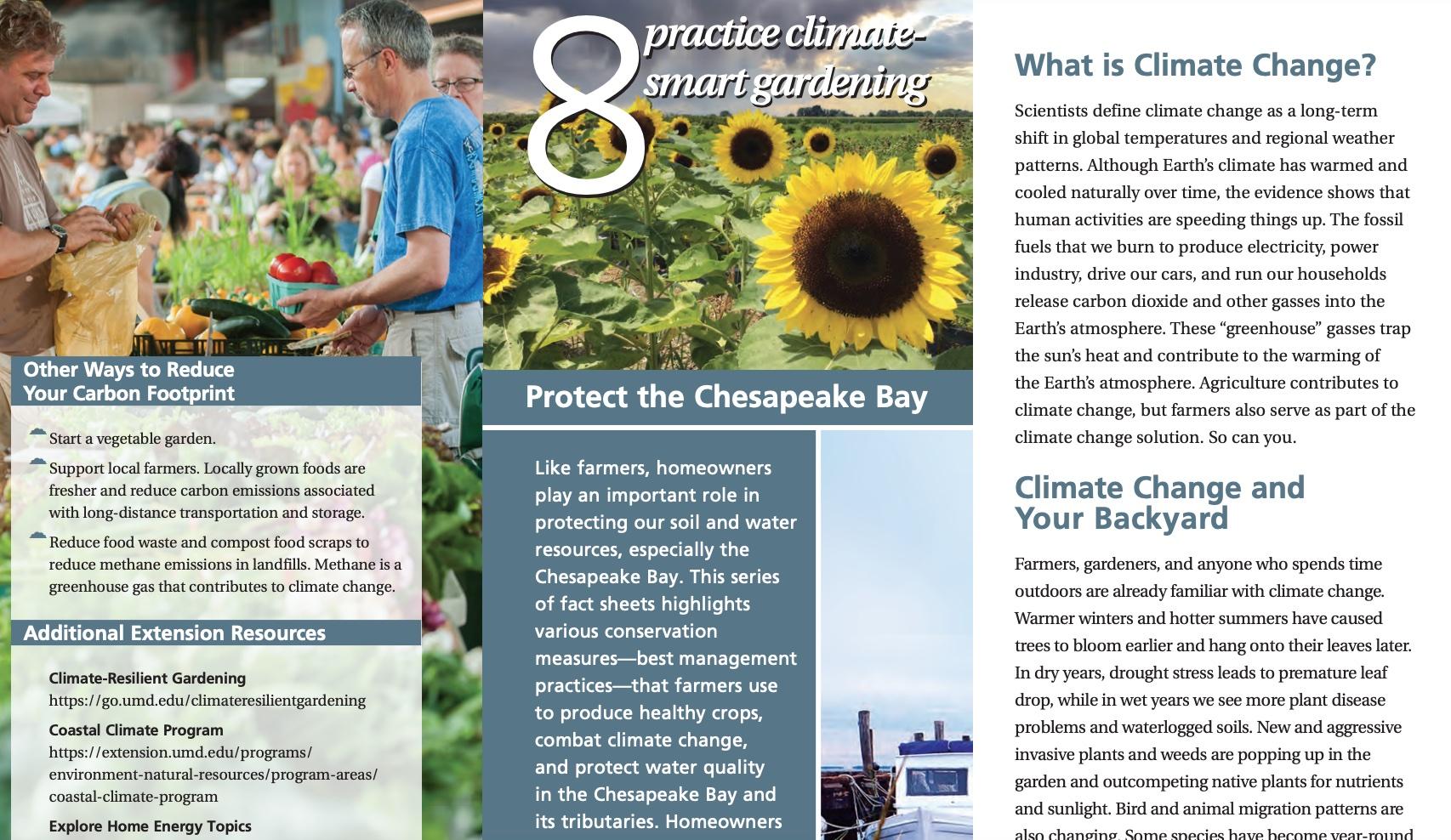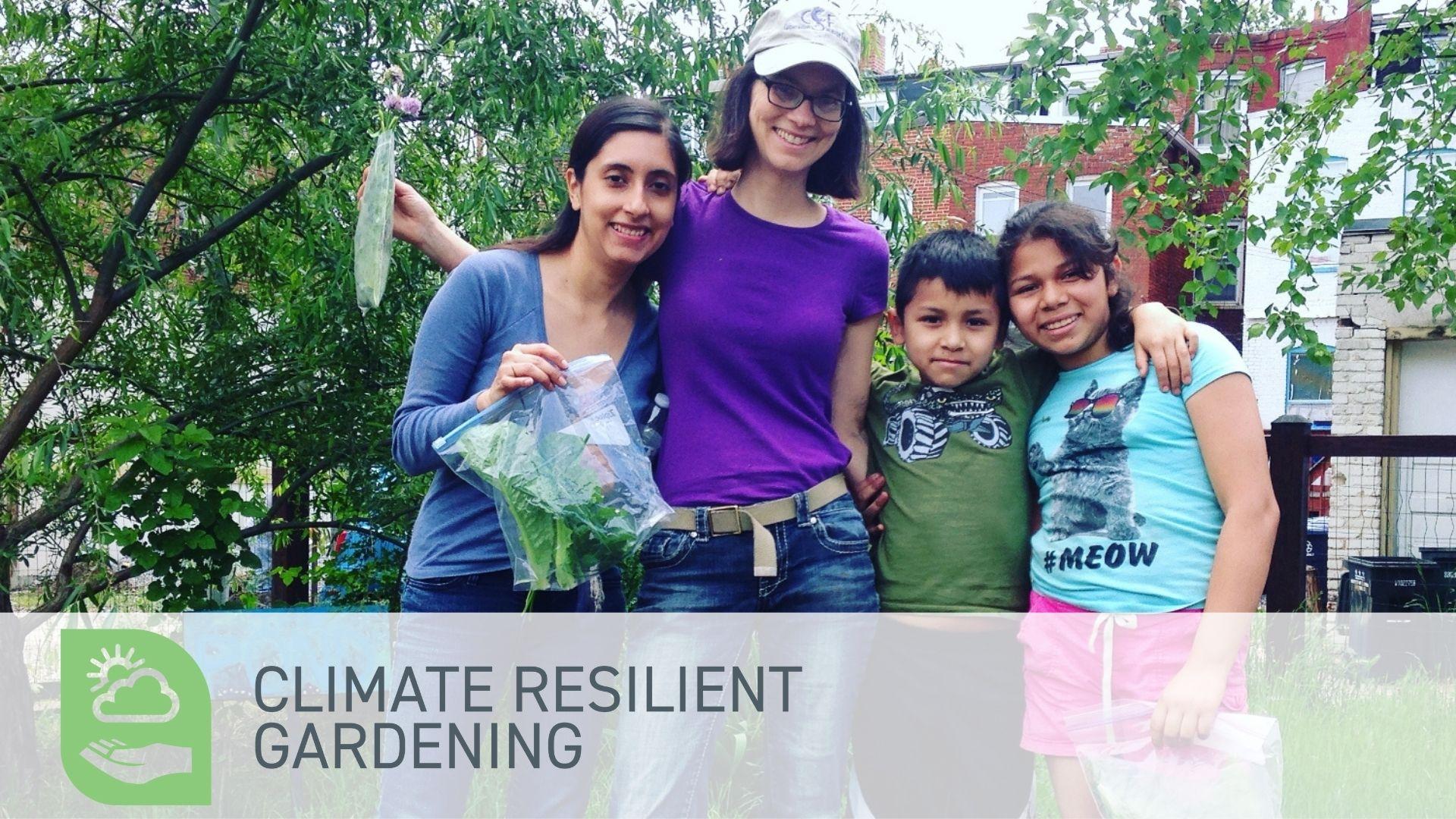How can gardeners help combat climate change?
Home gardeners can be an important part of the solution to climate change by using sustainable practices. Sustainable gardening and landscaping techniques can slow future warming by reducing carbon emissions and increasing carbon storage in soil and plants. In addition, you can adapt your gardens and green spaces and make them more resilient to climate change by adding native plant diversity, improving soil health, growing heat tolerant vegetable crops, and using stormwater management practices. We call this climate-resilient gardening. Read on for specific steps you can take now to adapt your garden and practice climate-friendly solutions.
Reduce greenhouse gas emissions that contribute to climate change
- Reduce your use of gas-powered lawn and garden equipment. When it comes time to replace your mower or weed trimmer, choose a rechargeable electric-powered one instead of a gas one. Instead of a leaf blower, use a rake or broom. These actions will cut down on gas emissions that contribute to climate change.
- Plant lawn alternatives where grass does not grow well on your property. This will reduce mowing and inputs of fertilizer and herbicides (which also take energy to produce) and will provide essential spaces for wildlife habitat. You can start by replacing just a small portion of lawn. For inspiration, look to these case studies from Maryland gardeners who are adding more plant diversity in place of turf.
- Use fertilizers wisely. Synthetic nitrogen fertilizer is a significant contributor to greenhouse gas emissions. Test your soil before applying any fertilizer.
Plant trees and landscape to conserve energy
Maryland has a goal of planting 5 million native trees by 2031 to mitigate climate change. Trees provide many benefits: shading and cooling urban heat islands, carbon sequestration, and improving air quality, to name a few.
- Planting Trees in Our Changing Climate introduces the many benefits of tree planting and provides tips for selecting trees.
- Use trees and other greenery around your home and community buildings to save energy.
- Deciduous trees planted on the west, east, and southwest sides of a building block the sun during the summer and allow the sun to penetrate and warm the house during the winter.
- Plant evergreen trees on the northwest side of a house to protect it from winter winds.
- Plant to provide shade over your air conditioning unit. Leave at least 3' of space to allow for good air circulation.
- Explore other home energy conservation topics from Maryland Energy Extension.
Plant more diversity: Add native plants, remove invasive ones
Landscapes with more plant diversity are more resilient when it comes to facing new pest and disease pressures and changes in the environment such as extreme heat and drought. More plant diversity in your garden also will support pollinators and beneficial insects that provide essential services like pest management and decomposition.
- Choose native plants whenever possible. Native plants generally require less water and fertilizer and provide essential food and shelter for native wildlife. Perennial native plants help store carbon and minimize soil erosion.
- Strive to have at least 70% native plants in your landscape. For ideas, see Recommended Native Plants for Maryland.
- Even small spaces can support a variety of native plants. See Landscape Designs with Native Plants.
- Avoid buying invasive plants that out-compete native ones. Read Ornamental Invasive Plants to Avoid With Climate Change, from the University of Massachusetts.
Protect and improve soils
Help store carbon by keeping soils covered with a diversity of plants. Improve soil health by adding organic matter and disturbing the soil as little as possible. Make compost from yard waste and food scraps. Compost can be used to enrich and improve your soil.
- Start here: Improve soil health for a climate-resilient garden.
- Use cover crops in your vegetable garden to recycle nutrients and reduce erosion.
- Learn why composting is a climate change solution. Here's how to make compost outdoors or indoors.
Manage stormwater runoff and conserve water
More frequent rainfall events and floods are anticipated with climate change. Help excess water slow down, soak in, and reduce erosion by creating a rain garden, swale, or vegetated buffer. Use rain barrels to store water for later use.
- Learn how to incorporate stormwater practices around your home.
- Create a Certified Bay-Wise Landscape to reduce polluted water runoff into the Chesapeake Bay.
- Learn about steps you can take to conserve water in your landscape.
Reduce food waste and grow some food locally
- Food waste in landfills generates methane, a potent greenhouse gas that can trap 28 times as much heat/mass unit as carbon dioxide. Learn about ways to reduce food waste.
- Grow some of your own food and buy food from local sources to reduce emissions associated with long-distance transportation and storage. Learn how to start a vegetable garden.
- Experiment with growing plants that can take the heat. Read about heat-tolerant vegetable crops and cultivars for the changing climate.
- High heat can affect crop productivity. Learn about the pollination of vegetable crops in a changing climate.
- Try using alternatives to peat moss when growing your plants. The harvesting of peat moss contributes to the release of carbon dioxide, a climate-warming greenhouse gas.
Learn more and share information in your community



